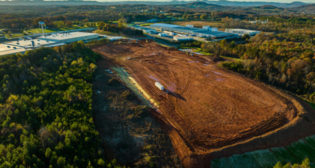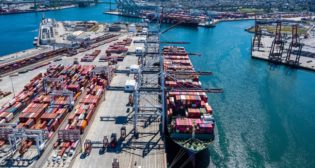
WMATA Sidelining 6000-Series Cars
Written by Marybeth Luczak, Executive Editor
An investigation is under way at WMATA after a train-separation incident occurred earlier today on an eight-car train, comprised of all 6000-series cars. (Wikipedia)
Washington Metropolitan Transportation Authority (Metro) is temporarily sidelining its fleet of 6000-series rapid transit cars after an early Nov. 24 train-separation incident on the Red Line. An investigation is under way; there were no reported injuries.
Chief Safety Officer Theresa Impastato recommended the safety directive, which was immediately approved by General Manager/CEO Paul J. Wiedefeld, the agency reported.
All 6000-series cars, which were built by Alstom, were expected to be removed by late Nov. 24. Metro said it will use its remaining in-service fleets—2000/3000-series legacy cars and newer 7000-series cars—to accommodate riders. Since the 7000-series cars make up more than half of the total fleet, rider impact is expected to be minimal.
The 6000-series suspension was ordered “due to commonalities with an incident in October in which two cars of a Red Line train became detached from a train outside Union Station. While the investigation into the October incident remains ongoing, the point of separation occurred at the train’s coupler,” Metro reported.
“Today’s incident occurred around 1 p.m. when an 8-car train comprised of all 6000-series cars reported mechanical trouble shortly after departing Glenmont Station,” Metro continued. “The train had not yet arrived at its first stop. Subsequent investigation by the train operator checking for mechanical trouble found that the first and last four cars had separated from each other. There were no injuries among the 12 passengers aboard the train.
“By design, a train will engage a full emergency brake application in the event that a car or cars separate. All indications are that those safety-related features worked as intended today.
“The incident was immediately reported to the Rail Operations Control Center, who requested a full emergency response. Third-rail power was safely taken down in the area, allowing firefighters to assist the train’s passengers back to the station. There were no reported injuries.
“Safety investigators are collecting data from the incident, including photos and measurements in the tunnel. Once on-scene investigative work is completed, the cars will be moved to a maintenance facility for further inspection and, ultimately, repair.”
The 6000-series suspension will remain in effect until investigators “fully understand the underlying causes and contributing factors involved,” the agency said.
The 6000-series fleet entered service in 2006 with 184 cars delivered over the subsequent three years, according to Metro. It is now approaching mid-life.
Metro investigators announced that “they intend to engage the cars’ original equipment manufacturer (OEM) to add technical and engineering expertise for specific components that are subject to the investigation.”



